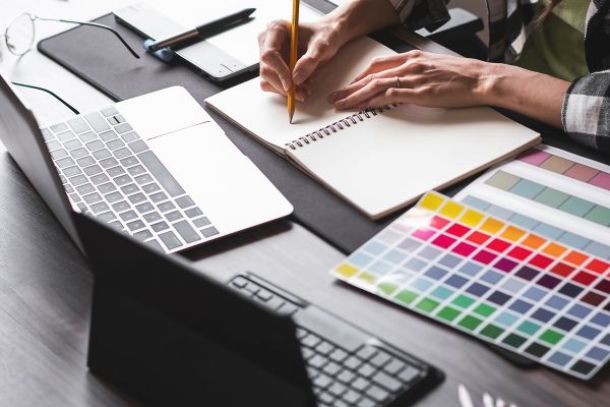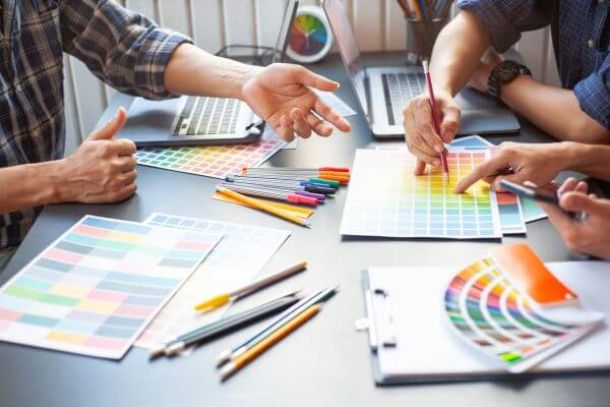Exploring the Relationship Between Photography and Graphic Design
Exploring the Relationship Between Photography and Graphic Design
Photography and graphic design are two distinct but closely related disciplines that often intersect in the world of visual communication. Both fields involve the creative manipulation of visual elements to convey ideas, tell stories, and evoke emotions. While photography focuses on capturing moments and portraying reality, graphic design centers on arranging visual elements to create a cohesive and effective message. Together, they form a powerful combination that enhances the impact of visual content across various platforms.
In this article, we will explore the intricate relationship between photography and graphic design, examining how these two fields complement each other, the skills required to excel in both, and the ways in which they can be combined to create compelling visual narratives.
1. The Role of Photography in Graphic Design
Photography plays a crucial role in graphic design, serving as a foundational element that can significantly influence the overall aesthetic and effectiveness of a design project. Photographs provide the visual content that designers use to communicate messages, set moods, and establish brand identities.
Enhancing Visual Appeal
High-quality photography enhances the visual appeal of a design by adding realism and depth. Whether it’s a striking landscape, a detailed product shot, or a candid portrait, photographs can capture the viewer’s attention and make the design more engaging. In advertising, for example, a well-composed photograph can make a product more desirable, while in editorial design, a powerful image can complement the written content and draw readers into the story.
Setting the Tone and Mood
Photographs are also instrumental in setting the tone and mood of a design. The choice of color, lighting, and composition in a photograph can evoke specific emotions and reinforce the message being communicated. For instance, a black-and-white photograph might convey a sense of nostalgia or seriousness, while a brightly colored image might evoke feelings of joy and energy.
Supporting the Narrative
In many cases, photographs are used to support the narrative of a design. They can provide context, illustrate key points, or add a layer of storytelling that enhances the overall message. In web design, for example, photographs are often used to create visual hierarchies, guide the user’s eye, and reinforce the content presented on the page.
2. The Role of Graphic Design in Photography
Just as photography enhances graphic design, graphic design plays a vital role in the presentation and utilization of photographs. Designers often manipulate and combine photographs with other visual elements to create cohesive and impactful compositions.
Compositing and Photo Manipulation
Graphic designers frequently use compositing techniques to blend multiple photographs into a single, seamless image. This process allows designers to create imaginative and surreal visuals that would be impossible to capture with a camera alone. Photo manipulation, on the other hand, involves altering photographs to enhance or change their appearance, such as adjusting colors, removing unwanted elements, or adding special effects. These techniques enable designers to push the boundaries of visual storytelling and create unique, eye-catching designs.
Incorporating Text and Graphics
One of the most common ways graphic design enhances photography is by incorporating text and graphics into photographic compositions. This combination is often seen in advertisements, posters, and social media graphics, where the photograph provides the visual backdrop and the text or graphics convey the message. The key to success in these designs is achieving a balance between the photograph and the added elements so that they complement each other without one overpowering the other.
Layout and Composition
Graphic design also plays a crucial role in determining the layout and composition of photographs within a design. Whether it’s a magazine spread, a website, or a billboard, designers carefully consider how photographs are arranged to create a visually pleasing and effective composition. This involves making decisions about cropping, scaling, and positioning photographs to ensure they work harmoniously with other design elements.
3. The Intersection of Photography and Graphic Design
The intersection of photography and graphic design is where creativity flourishes. When these two disciplines are combined effectively, they can produce visually stunning and communicatively powerful results.
Creating Visual Hierarchies
One of the ways photography and graphic design intersect is in the creation of visual hierarchies. Designers use photographs to create focal points that draw the viewer’s attention, while the surrounding design elements guide the viewer through the rest of the composition. This technique is often used in magazine layouts, where a large photograph might serve as the main focal point, with smaller images and text elements arranged around it to provide additional context and information.
Branding and Identity Design
Photography and graphic design often work together in branding and identity design. Photographs can be used to convey the personality and values of a brand, while graphic design elements like logos, typography, and color schemes reinforce the brand’s identity. For example, a luxury brand might use high-end photography with clean, minimalist design elements to convey elegance and sophistication.
Advertising and Marketing Campaigns
In advertising and marketing, the combination of photography and graphic design is essential for creating impactful campaigns. Photographs capture the viewer’s attention, while the design elements convey the message and call to action. This collaboration is crucial in digital marketing, where visually striking ads are needed to stand out in crowded social media feeds.
4. Developing Skills in Both Photography and Graphic Design
To effectively combine photography and graphic design, it’s essential to develop skills in both disciplines. While it’s possible to specialize in one area, having a working knowledge of both can significantly enhance a designer’s or photographer’s ability to create compelling visual content.
Understanding Composition and Visual Balance
Both photographers and graphic designers need a strong understanding of composition and visual balance. Photographers must know how to frame a shot, use leading lines, and create depth, while designers need to understand how to arrange elements within a layout to create a harmonious composition. By mastering these principles, professionals in both fields can create visually balanced and aesthetically pleasing designs.
Mastering Editing Software
Proficiency in editing software is another essential skill for both photographers and graphic designers. Adobe Photoshop, Lightroom, and Illustrator are industry-standard tools that allow for the manipulation and enhancement of photographs and the creation of complex graphic designs. Understanding how to use these tools effectively can open up a world of creative possibilities.
Developing an Eye for Detail
Attention to detail is crucial in both photography and graphic design. Photographers must be aware of lighting, focus, and background elements that could distract from the main subject, while designers need to consider color harmony, typography, and spacing to ensure a polished final product. Cultivating an eye for detail can make a significant difference in the quality of the work produced in both fields.
5. The Future of Photography and Graphic Design
As technology continues to evolve, the relationship between photography and graphic design is likely to become even more intertwined. Emerging technologies like augmented reality (AR), virtual reality (VR), and artificial intelligence (AI) are opening up new possibilities for creative expression in both fields.
Augmented Reality and Virtual Reality
AR and VR are revolutionizing the way we experience visual content. Photographers and graphic designers are now exploring ways to create immersive experiences that combine real-world photography with digital design elements. These technologies allow for the creation of interactive environments where users can engage with visual content in entirely new ways.
Artificial Intelligence in Design and Photography
AI is also making its mark on both photography and graphic design. AI-powered tools can analyze photographs to suggest edits, enhance images, and even create entirely new compositions. In graphic design, AI can assist with tasks like generating layouts, selecting color schemes, and optimizing designs for different platforms. While AI will not replace the creativity and intuition of human designers and photographers, it will undoubtedly become a valuable tool in the creative process.
Sustainability and Ethical Considerations
As the world becomes more conscious of environmental and ethical issues, photographers and graphic designers are increasingly considering the sustainability of their work. This includes choosing eco-friendly printing options, minimizing digital waste, and creating content that promotes positive social and environmental change. The future of photography and graphic design will likely see a greater emphasis on these considerations, leading to more responsible and impactful visual communication.
Conclusion: The Power of Combined Creativity
The relationship between photography and graphic design is a dynamic and evolving one. When combined, these two disciplines have the power to create visually compelling and communicatively effective content that resonates with audiences. By understanding the strengths of both fields and learning how to integrate them seamlessly, photographers and graphic designers can elevate their work and make a lasting impact in the world of visual communication.
As technology continues to advance, the possibilities for collaboration between photography and graphic design will only expand, offering new opportunities for creativity and innovation. Whether you are a photographer looking to enhance your visual storytelling with design elements, or a graphic designer seeking to incorporate compelling photography into your work, mastering the intersection of these two fields will allow you to create truly remarkable visual experiences.

